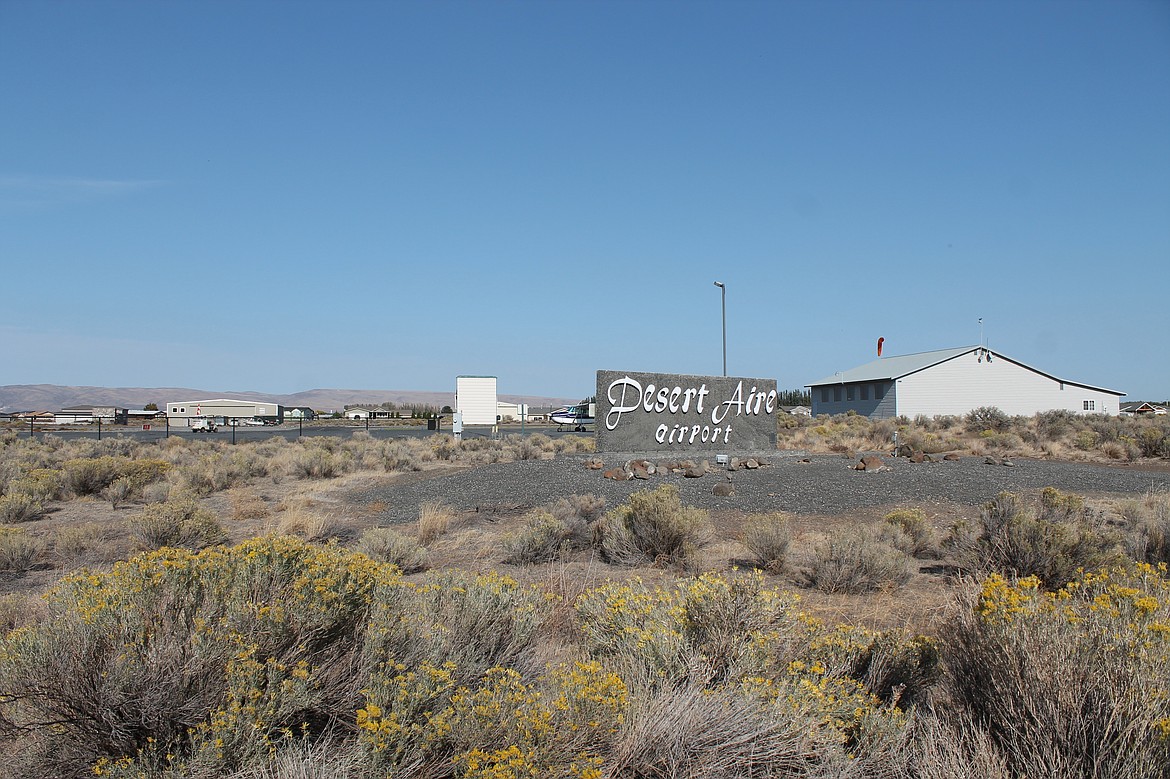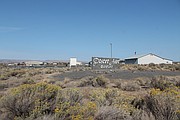Desert Aire airport levy on November ballot
DESERT AIRE — Vince Himsl pulls a dollar bill out of his wallet and bends over to put it into a crack on the ramp of the Desert Aire Regional Airport. For Himsl, chairman of the airport board of commissioners, the dollar bill is a good way to demonstrate how large the cracks in the ramp actually are.
Desert Aire has had some form of airstrip for at least 40 years, whether it be gravel or pavement. In 1994, an official airport district was formed. Since that time, the airport has been supported primarily by donations from the Desert Aire community.
But since the airport doesn’t have a steady income to rely on, some routine maintenance on the runway and airport equipment has been ignored. In 2012, the commissioners, with donations from the residents of Desert Aire and a grant from the Washington State Department of Transportation, were able to repave and widen the runway. A few years prior, one of the airport’s two taxiways was also repaved.
But the second taxiway and the ramp have not had the much-needed maintenance. Cracks, like the one that Himsl put the dollar bill into, can cause pilots to lose control of their planes.
“If they’re wide enough, they can catch the tail wheel or cause the nose to swerve,” Himsl said. “The pilot has to counteract the steering.”
Himsl said that the cracks cause more problems for the airplanes with tail wheels because the tail wheels are smaller and narrower.
Prior to the repaving of the runway and first taxiway, there had been large cracks in those as well.
“We were forced into it,” said Ken Broda, secretary/treasurer and commissioner.
To prevent cracks from appearing again, routine maintenance must be performed. These types of repaving and maintenance projects can’t be done without grants. To get these grants, the airport must pay for a portion of the project.
“To get grants, they like us to pony up part of it,” said Bob Trantina, acting manager and commissioner for the airport. “To do that, we have to have a stable source of income.”
Currently, the airport district is renting six acres of land from the Desert Aire Owners Association for the purpose of developing it to create that stable income. But since the airport is only supported by donations, there has not been enough money to develop the property.
With the need for funds to do maintenance to the runway and weather system associated with the airport, along with a directive this spring from the Washington State Auditor’s Office, the airport commissioners have put a levy measure on the November ballot.
By Washington state law, the commissioners must put in wording stating that landowners in the Desert Aire Regional Airport District can be levied up to 75 cents per $1,000 of assessed value. But the commissioners don’t think they will have to collect that much money.
“That doesn’t mean that’s what the levy amount is going to be,” Trantina said. “We have the responsibility to set the tax dollars based on the budget. The budget is open to public discussion. We as commissioners are determined to keep it in the 40- to 50-cent range. If we had started earlier (using a levy), we would have been able to do with 40 cents. We’re playing a little bit of catch up now.”
The Desert Aire Regional Airport sits on approximately 63 acres. It has approximately 1,000 to 1,200 landings each year, which is similar to other airports of its size in Grant County.
“We average three to four (landings) a day,” Trantina said.
The airport is used by Desert Aire homeowners, those visiting the area, EMS and firefighters. To accommodate EMS helicopters, a helipad has been added.
“It gives them a dedicated spot for swift evacuation,” Himsl said.
In 2017, an accident occurred at Wanapum Dam. The airport at Desert Aire was used to airlift the injured.
It is also used on a regular basis by firefighters. This year, it was the fueling location for those working on the fires on Saddle Mountain and the Yakima Training Center. The refuelers use a grassy spot located between one of the taxiways and the runway.
“Otherwise they would have to be in a field,” Himsl said. “The pilots prefer it here. The crews can go to the restaurants and get a soda pop. Out in the orchard is not near as convenient.”
In addition, the airport is used by helicopters, hired to blow the rain off of cherries, and flight training schools, such as those of Big Bend Community College and Central Washington University.
If voters approve the levy on the November ballot, the much-needed maintenance may be done.
“Where we’re at with the newly paved runway, it costs $150,000 every five years to maintain it,” Broda said. “That is considered normal maintenance. That is what has driven us to the ballot box.”
“We’re a victim of our own success,” Himsl said. “We can no longer be maintained by simple donations. We’ve gotten too big for our britches.”
Rachal Pinkerton may be reached via email at [email protected].



